In today’s digital age, smart packaging has revolutionized the way consumers interact with products. Connected packaging, also known as smart packaging, combines traditional packaging with digital technology to create immersive and interactive experiences for users. In this article, we will delve into the concept of connected packaging, explore real-life examples, and highlight the benefits it offers. From QR codes to NFC tags and augmented reality, let’s uncover the world of smart packaging solutions.
What is Connected Packaging?
Connected packaging refers to the integration of digital elements, such as QR codes, NFC tags, or augmented reality, into traditional product packaging. These technologies enable consumers to interact with the product, access additional information, and engage in unique experiences using their smartphones or other digital devices. By bridging the physical and digital worlds, connected packaging enhances user engagement, brand storytelling, and customer satisfaction.
Connected Packaging Solutions:
QR Code Food Packaging: QR codes are widely used in packaging to provide quick and convenient access to product information, promotions, or loyalty programs. By scanning the QR code on the packaging, consumers can unlock a range of content, including recipes, nutritional facts, or exclusive offers. This technology enables seamless interaction and empowers consumers with valuable information.
NFC (Near Field Communication) Tags: NFC technology allows for contactless communication between a smartphone and an NFC-enabled tag embedded in the packaging. With a simple tap, users can access product details, watch videos, participate in contests, or even make purchases. NFC tags offer a secure and effortless way to engage with the product, enhancing the overall user experience.
Augmented Reality Packaging: Augmented reality (AR) takes connected packaging to the next level by overlaying digital content onto the physical packaging. By using a smartphone or tablet camera, consumers can unlock interactive experiences, such as virtual product demonstrations, games, or immersive storytelling. Augmented reality packaging creates memorable and captivating moments that leave a lasting impression.
Connected Packaging Examples:
Appetite Creative assisted baggl in launching their first-ever marketing campaign amid the Covid-19 pandemic, developing a retro-style mobile game (“The Virus Slayer”) and managing their social media and SEO services. The efforts led to a 50.7% increase in website visitors, a 221.4% surge in website interaction time, and captured the contact details of 56 game users within the first month. Moreover, the collaboration resulted in a 170.37% increase in LinkedIn followers and over 1,500 organic post impressions.
Tetra Pak and Woodlands Dairy, working with Appetite Creative, initiated a sustainability campaign, engaging consumers through QR code-based interactive quizzes on packaging. The successful campaign generated significant user engagement metrics with a bounce rate of only 18%, and an average user engagement time of 2 minutes and 14 seconds. The promotion effectively elevated Woodlands Dairy as a sustainable brand, attracting significant traffic from Facebook and encouraging consumer education on sustainability in the dairy industry.
Conclusion:
Connected packaging, with its smart solutions like QR codes, NFC tags, and augmented reality, has transformed the packaging industry. It offers a gateway to interactive experiences, enhances brand-consumer interactions, and provides valuable insights. From accessing product information to unlocking exclusive content, connected packaging bridges the physical and digital realms, delighting consumers and propelling brands forward. Embrace the power of connected packaging and unlock a world of possibilities for your brand.
